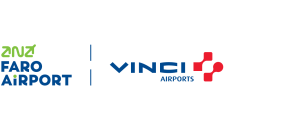New Access Rules at Faro Airport
21st May 2015
As from the 20th Of May Faro Airport has new rules for car access to the arrivals and departures curbside areas. Access for the general public is guaranteed, free of charge, for picking up and dropping off passengers. All private users intending to drop off/pick up passengers at the airport are entitled to 10 minutes for free.
With these changes, Faro Airport is implementing Kiss & Fly, a concept that is widespread in other airports in Europe and around the world. This system is in use at Helsinki, Prague, Marseille, Basel-Mulhouse International Airport, Paris-Orly, Geneva, Paris CDG, Chicago O’Hare, JFK, Brussels, Wroclaw, Charlotte-Douglas, Bologna, Tallinn, Dortmund, Gatwick, San Francisco, Nice and Heathrow, among others.
In this way, dropping off or picking up someone from Faro Airport will be a faster, calmer, and more comfortable experience, as users will be able to stop next to the terminal itself.
The idea, however, is to discourage repeated curbside use and, as such, there will be a charge for the third time of use within 24 hours. Public buses will not be charged. Taxis dropping off passengers will not be subject to any fees if they use the bus lane in departures. Taxis collecting passengers will remain at the space currently available for this purpose, which will have reserved access for valid permit holders. Tourism buses and hotel shuttles will have their own spaces suitable for airport access (parks P5 and P6 respectively). Car rental companies without premises at Faro Airport already have parking spaces allocated (through a permit system).
The curbside at Faro Airport is currently affected by various operational restrictions and environmental considerations, largely caused by imbalances in types of access and misuse by private and business users outside ANA airport activity.
In light of the congestion identified, the aim is to streamline accessibility, reorganising access to passenger terminals in the process, by promoting the operational efficiency, security, and the environmental sustainability of its use.
In practice, use of this space for excessive amounts of time is discouraged, so that there is no disruption to users and airport operations as a whole, especially at peak times, nor increased security risks. The curbside is a critical, reserved space: it should not be used as an extended car park, otherwise acceptable levels of operability and safe access to terminals may be undermined. It is essential to encourage responsible use of these spaces in order to provide a better experience for all users.
By improving the experience of users, we are improving the image that will remain with people in terms of the service and comfort of our airport. This issue is particularly relevant given that airports are one of the main gateways for tourists into our country.


